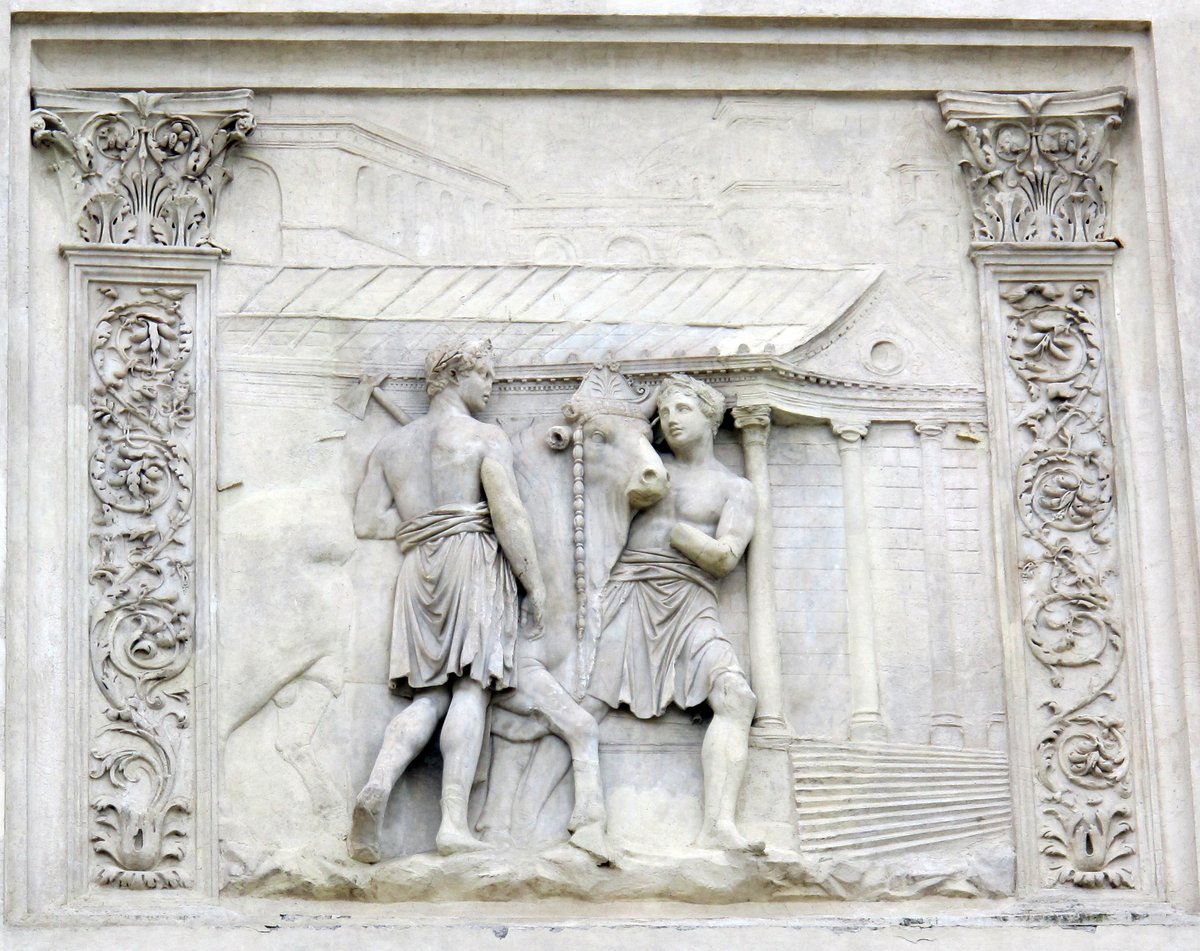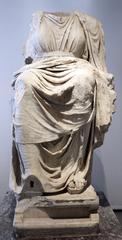
Temple of Cybele in Rome: Visiting Hours, Tickets & Historical Guide
Date: 14/06/2025
Introduction
Perched atop the legendary Palatine Hill, the Temple of Cybele—also called the Temple of Magna Mater—offers a unique glimpse into the spiritual and architectural heart of ancient Rome. Dedicated in 191 BCE, this sacred site was central to the worship of Cybele, the Great Mother goddess from Anatolia whose cult arrived in Rome during a period of crisis. The temple’s ruins today stand not only as a testament to religious syncretism but also as a window into Rome’s imperial grandeur, set amidst panoramic views and neighboring some of the city’s most iconic landmarks (The Collector; Longevity Live).
This comprehensive guide covers the temple’s historical background, religious significance, architectural features, visiting hours, ticketing, accessibility, and practical tips for exploring one of Rome’s most evocative archaeological sites.
Table of Contents
- Historical Background
- Religious and Cultural Significance
- Architectural Features and Archaeology
- Visitor Information
- Nearby Attractions
- Frequently Asked Questions (FAQ)
- Summary and Visitor Tips
- References & Further Reading
Historical Background
Origins: Arrival of Cybele’s Cult in Rome
The cult of Cybele, or Magna Mater (“Great Mother”), was introduced to Rome in 204 BCE at a time when the city faced existential threats from Carthage during the Second Punic War. The Roman Senate, guided by the Sibylline Books, sought divine intervention and imported Cybele’s sacred black stone from Pessinus in Anatolia. Her arrival, marked by elaborate ceremony, was celebrated as a turning point in Rome’s fortunes, with subsequent victories attributed to her favor. The annual festival of Megalensia commemorated this momentous event (The Collector; Discentes).
Construction and Location
Situated prominently on the Palatine Hill—Rome’s mythical birthplace and home to emperors—the Temple of Cybele was constructed soon after the goddess’s arrival, with a formal dedication in 191 BCE. Its location, near the residences of the elite and imperial palaces, underscored the central role of Cybele’s cult in public and state religion. The temple was rebuilt multiple times following fires, but its placement remained constant, symbolizing continuity and spiritual protection (World History Edu).
Religious and Cultural Significance
The cult of Cybele introduced a different spiritual experience to Rome, marked by ecstatic rituals, music, and colorful processions. Her worship involved both men and women and promised personal salvation—a concept not present in traditional Roman religion. Closely associated with Attis, whose myth of death and rebirth echoed the cycles of nature, Cybele’s mysteries included dramatic rites such as the taurobolium: the sacrificial bathing in bull’s blood for purification and renewal (The Collector).
Initially viewed with suspicion due to its foreign origins and fervent practices, Cybele’s cult gradually gained acceptance, especially as it resonated with a society grappling with existential threats and change. Over time, it became ingrained in the civic and spiritual life of Rome, with the temple serving as a focal point for the popular Megalensia festival each spring and for personal devotion, particularly among women.
Architectural Features and Archaeology
Design and Materials
The Temple of Cybele exemplified a blend of Hellenistic and Roman architectural traditions. Built on a high podium, it featured a grand pronaos with Corinthian columns and a deep cella that housed Cybele’s sacred image. Richly decorated with marble, sculptural reliefs, and possibly frescoes, the temple’s façade was adorned with scenes depicting the goddess enthroned with lions and mythological processions (Brewminate; Longevity Live).
Materials included local tufa, imported marble, terracotta roof tiles, and Roman concrete, attesting to advanced engineering and the imperial resources devoted to the site (Academia.edu).
Archaeological Remains
Although much of the superstructure is lost, visitors can still see podium foundations, column bases, and decorative fragments. Many artifacts—votive offerings, inscriptions, and architectural elements—are preserved in the nearby Palatine Museum, providing a vivid sense of the temple’s past grandeur and ritual life (Longevity Live).
Visitor Information
Visiting Hours
- Opening Times: The Palatine Hill archaeological park, including the Temple of Cybele, opens daily at 9:00 AM and closes one hour before sunset. Last entry is one hour before closing.
- Check Official Sources: Hours may vary seasonally; always confirm via the Parco Archeologico del Colosseo website.
Tickets and Admission
- Ticket Includes: The Temple of Cybele is part of the combined ticket for Palatine Hill, Roman Forum, and Colosseum.
- Pricing: Standard adult tickets are approximately €16; reduced rates for EU citizens aged 18–25; free for children under 18.
- Reservations: Online booking is highly recommended, especially during peak seasons and Jubilee years (Adequate Travel).
Accessibility
- The site features uneven terrain and ancient steps. Some accessible paths exist, but those with mobility challenges should consult official resources or consider guided tours tailored for accessibility.
Guided Tours and Tips
- Tours: Many guided tours of Palatine Hill include the Temple of Cybele. Audio guides and apps are available for self-guided exploration.
- Best Times: Early morning or late afternoon visits offer cooler temperatures and fewer crowds.
- What to Bring: Comfortable footwear, water, sun protection, and a hat. Shade is limited.
Nearby Attractions
- Roman Forum: Once the center of Roman political and religious life.
- Colosseum: Iconic ancient amphitheater.
- Palatine Museum: Houses artifacts from the hill, including those related to Cybele.
- Temple of Apollo Palatinus: Another significant religious site on the hill.
These sites are within walking distance, making it easy to immerse yourself in Rome’s layered history.
Frequently Asked Questions (FAQ)
What are the Temple of Cybele opening hours?
The site opens at 9:00 AM and closes one hour before sunset, with last entry one hour before closing. Always check the official website for updates.
How much do tickets cost?
Standard adult tickets are around €16 and include the Roman Forum and Colosseum. Discounts are available for EU citizens aged 18–25; children under 18 enter free.
Is the Temple of Cybele wheelchair accessible?
The site has uneven terrain and is not fully accessible; consult official resources for details.
Can I take photographs at the site?
Yes, photography is permitted. Drone use requires special permission.
Are guided tours available?
Yes, many guided tours of Palatine Hill feature the Temple of Cybele.
Summary and Visitor Tips
The Temple of Cybele stands as an evocative reminder of Rome’s religious diversity and imperial heritage. From its Anatolian origins and dramatic cult rituals to its integration into Roman state religion, the temple encapsulates the dynamic spiritual landscape of ancient Rome. While the structure is mostly in ruins, the site and the nearby Palatine Museum offer a tangible connection to the Great Mother’s legacy (World History Edu; The Collector).
For the best experience:
- Book tickets in advance.
- Visit early or late in the day.
- Use audio guides or join a tour for deeper context.
- Pair your visit with nearby attractions for a comprehensive exploration.
To enrich your trip, download the Audiala app for audio guides, follow us on social media for the latest travel tips, and check our related guides for more on Rome’s ancient treasures.
References & Further Reading
- The Collector: Cybele, Isis, Mithras in Ancient Rome
- Longevity Live: Palatine Museum and Temple of Cybele
- World History Edu: Palatine Hill
- Adequate Travel: Temple of Cybele Rome
- Parco Archeologico del Colosseo Official Website
- Ostia Antica: Campo della Magna Mater
- Academia.edu: Comparison of Greek and Roman Temples


















































































































































































































































